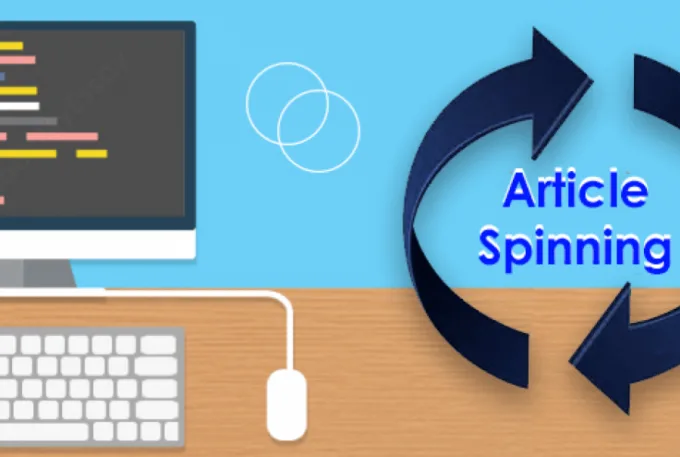
Article spinning is a technique used to create new articles by rewriting an existing article or content using software or manual techniques. The goal of article spinning is to create multiple variations of the original article that can be published on different websites or platforms to improve search engine rankings and increase website traffic.
The process of article spinning involves replacing certain words or phrases in the original article with synonyms or other words that have a similar meaning. This can be done manually by a writer or automatically by specialized software. The resulting article may have the same general structure and content as the original article, but with different wording and phrasing.
While article spinning can be a useful technique for creating unique content, it has been criticized for producing low-quality content that is difficult to read or understand. It can also be viewed as a form of plagiarism if the resulting article is too similar to the original article.
Most search engines, including Google, penalize websites that use article spinning to create duplicate or low-quality content. Therefore, it is important to use article spinning techniques carefully and to create high-quality content that provides value to readers.

Is article spinning bad for your SEO strategy?
Article spinning is a method of presenting someone else’s work as your own by slightly modifying the text. It’s an unethical and deceitful approach to content creation, yet some individuals still choose to use it instead of putting effort into producing original material. This practice became popular in the early 2000s since Google’s algorithm couldn’t detect it. However, the algorithm has since evolved, and now duplicate and “thin” content is penalized and demoted in search results.
Despite Google’s efforts to prevent computer-generated content, some black-hat SEOs still use article spinning. It’s often used to produce a large number of posts quickly, with some of them ranking for specific keywords and driving traffic to the site. Another application is low-quality link-building, where spun articles are spread across various sites for payment.
While content spinning can save you time and boost your site’s ranking in search engine results pages (SERPs), the lack of authenticity and value for readers will eventually expose you. Content produced by spinners is made for the search engine, and the reader’s experience is rarely considered. In most cases, actual readers can tell that the content isn’t original, even if search engine algorithms overlook it.
Furthermore, the potential consequences of spinning content aren’t worth it. If Google recognizes your content as computer-generated or low-quality, the page won’t be indexed or displayed in SERPs. Additionally, featuring low-quality, spun content could potentially harm all the other pages on your site, even if they contain high-quality, relevant material that would otherwise rank well. Google has a specific penalty for “thin content,” including spun content, and your site may be penalized for it.
Fortunately, there are some things you can do to avoid this:
- Refrain from using AI-based paraphrasing tools.
- Use your own voice and approach common topics from different angles.
- Use a plagiarism checker to make sure you haven’t inadvertently copied someone else’s content.
Here are some ideas on Plagiarism Checkers


